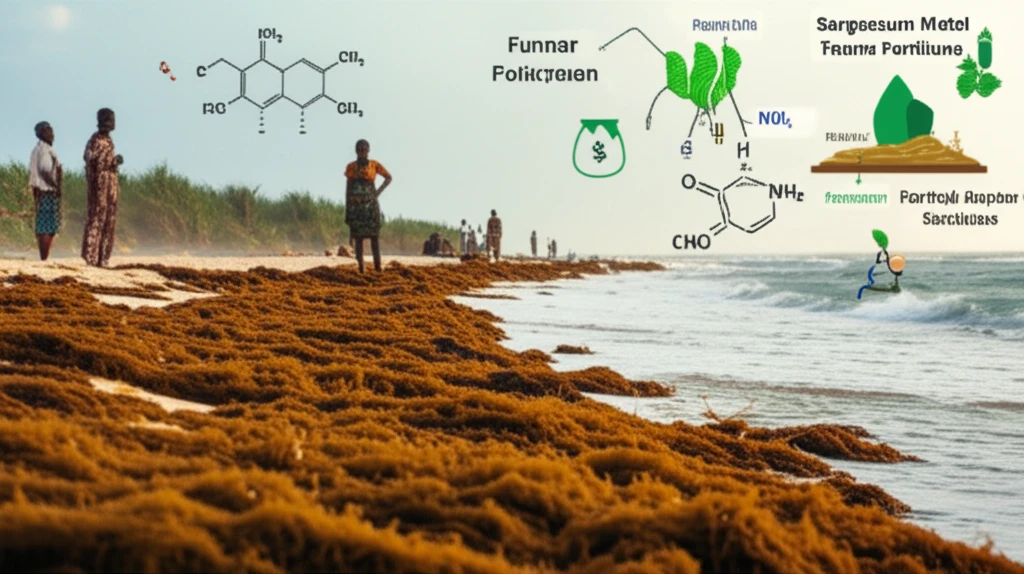
Ghana's Seaweed Invasion: Unveiling the Secrets of Sargassum and Its Impact on Coastal Health
"From Ocean to Shore: A Deep Dive into the Chemical Composition of Invasive Seaweed and Its Environmental Implications."
In the vibrant coastal regions of Ghana, a silent invader has been making waves – or rather, washing ashore. The brown seaweed, Sargassum, first appeared in 2009 and has since become a significant presence, impacting the delicate balance of marine ecosystems and the livelihoods of coastal communities. But beyond its visible impact, Sargassum holds a complex story within its very structure, a story of nutrients, toxins, and potential uses that's just beginning to be told.
This article delves into the preliminary investigation of Sargassum's chemical composition along Ghana's West Coast. It uncovers the presence of both beneficial nutrients and concerning heavy metals. By exploring the seaweed's internal makeup, we aim to understand its potential as a resource and the challenges it poses to the environment and human health. This exploration is vital for developing informed strategies for managing and utilizing this unexpected visitor.
Our journey into the world of Sargassum will reveal not only its chemical secrets but also its broader implications for Ghana's coastal communities. It's an investigation that touches on biodiversity, tourism, and the health of those who depend on the ocean. Join us as we explore the complexities of this invasive species and its role in a changing coastal landscape.
What is Sargassum and Why Is It Invading Ghana's Coast?

Sargassum, a genus of brown macroalgae, isn't new to the world's oceans. However, the sudden influx of certain Sargassum species along Ghana's coast, particularly the Western Region, has raised concerns. These seaweeds, known for their free-floating nature, have disrupted the natural balance of marine environments. Unlike many seaweeds that anchor themselves to the seabed, Sargassum often drifts, forming massive mats that can wash ashore.
- Biodiversity Disruption: Altering habitats and impacting marine life.
- Tourism Setbacks: Affecting the aesthetic appeal of beaches.
- Economic Hardship: Impacting the livelihoods of fishing communities.
- Ecological Imbalance: Disrupting the natural order of coastal ecosystems.
Looking Ahead: Managing Sargassum and Protecting Ghana's Coast
The study's findings underscore the need for continuous monitoring, in-depth research, and proactive management strategies. Exploring potential uses, such as organic fertilizer or biofuel, alongside effective removal and disposal methods, is crucial. Collaboration between scientists, policymakers, and coastal communities is essential for the long-term health of Ghana's marine ecosystems and the well-being of those who depend on them. As the story of Sargassum continues to unfold, it presents both challenges and opportunities for a more sustainable future.
